Suppose you have ever been to a typical Viennese cafe house. In that case, you may have noticed that in addition to the smell of coffee, a casual atmosphere and newspapers in wooden frames, simple wooden chairs are also typical attributes of the house. Most often, it is chair no. 14 – with a double bent backrest, consisting of six parts. This is the best-selling chair in the world.

This chair is also called “Thonet-Chair”. It was made by the German-Austrian cabinet maker and entrepreneur Michael Thonet – a pioneer of a new method of furniture production, based on the principle of bending beech wood in hot steam.

Thonet first tried to make furniture out of glued and bent wooden slats. He gradually perfected the technology and produced elegant furniture with light, gracefully curved shapes. This made it significantly different from the heavy models of the past. In 1841, at the fair in Koblenz, he met Chancellor Klemens Metternich, who was enthusiastic about his furniture. Metternich invited Thonet to Vienna and arranged his first orders here. He even had the opportunity to present his products to the imperial family. Finally, Thonet decided to move to Vienna. Together with his sons, they founded the company Gebrüder Thonet (Thonet Brothers), began working for Prince Liechtenstein on the wooden floor and interior decoration of his city palace, and opened their first store in Vienna. They even got permission from the emperor to use expensive wood to experiment. In 1850, Thonet produced his chair no. 1. This was followed by success at the exhibitions in London and Paris. In 1856, they opened a new factory in Koryčany in Moravia, and in the following years, five more Central European production factories. Thonet continued to improve his production methods.
Iconic chair no. 14 is from 1859. Thonet won a gold medal at the World Exhibition in Paris and more than 80 million of these chairs have been produced to date! What is more, new ones are still being produced. Where? Also in the Czech Republic – the Czech company TON, which follows the Thonet-Mundus concern.

This concern was created after the First World War when the three biggest competitors – Thonet, Mundus and Kohn – merged. At the time of his enormous success, Michael Thonet founded a factory right here in Bystřice pod Hostýnem in 1861. It was an ideal place because there were many beech groves nearby. Today, it is the oldest still operating factory of its kind in the world (over 160 years). And right here you can see the entire production process as part of guided tours.

The tour begins in the villa from 1873. Michael Thonet did not live to see the opening of this family residence. He died in Vienna in 1871 and is buried at the Central Vienna Cemetery.
A beautiful large park stretches behind the villa. There is not only a pond, but also, for example, wooden birdhouses on trees, because the company places great emphasis on connecting nature and industry. In the park, you can sit and relax not only on benches but of course also on chairs. 🙂

The first room of the tour is the lumber warehouse. The wood rests here for five months. It is important to maintain the right humidity. Today, there are fewer beech groves in the area, so wood is imported from Slovakia as well.

The trucks with waste caught our attention. We learned that they press bio-bricks from it. In cooperation with universities and designers, they are then used to create various objects for exhibitions in the villa. Playing cubes or wooden handles for fashion handbags etc. are also made from waste. So only a very small part remains unusable.
After that, we entered the interior of the factory and could watch the production of the chairs from an immediate distance. Of course, I was most interested in chair no. 14. The long wooden timbers are first turned into long round bars using a machine.

We could hold the bar in our hand and test how strong it is. We did not want to believe that this piece of wood could be bent. First, it must be put in the oven – in steam with a temperature of about 100°C. Then one man took out a bar, together with a colleague attached it to a stand and a metal form, and immediately they bent it as if it were a piece of rubber.




We watched the ritual again and again in disbelief, the pair of men knew exactly what to do and their movements were coordinated like some dance choreography. In reality, this work requires proper strength and skill.


The bent wood is then placed in Thonet’s invention – a special form which ensures that the wood is strengthened. The finished bends must then rest for another 3-4 weeks in the air-conditioning chamber.

A special detail can also be inserted into the bent backrest. The chair with the heart detail is the most demanding product of the company.
In the TON company, they can also produce the so-called split – as the only ones in the world.










Some of the chairs are made of cane that is imported from Vietnam.




During the tour, we saw how wood is sanded, glued, dyed, varnished and oiled. Also how the upholstered parts are added and how the finished products are checked and packed. Another reason for Thonet’s success is the fact that his chairs could be disassembled into several components and thus produced in individual processes of the division of labour. So chair no. 14 became the first mass-produced piece of furniture in the world. In addition, the unfolded chairs could easily be exported in a simple package, all over the world. 36 unfolded chairs fit into a box with a volume of 1 m³. And experienced workers can assemble one chair in 90 seconds.




On the wall in the production hall, we saw prototypes of several chairs: of course, first of all, the timeless classic – chair no. 14.

Even its elaborate form – the chair from six pieces was minimized by the designers into three parts. This chair no. 314 was produced on the occasion of the 150th anniversary of the founding of the company. Also, bar stool no. 18 – iconic furniture not only for Parisian cafes. Or chair no. 811, designed in 1930 by famous Austrian architect and designer Josef Hoffmann. Designers have reworked this chair into a 21st-century model – with holes made by laser – as model no. 822. We saw chair no. 30 as well – its elegant design was admired by French architect Le Corbusier and he often used it in his projects. You can see all these types of chairs: HERE

Here, I also saw how a chair like I used to have in my children’s room was made. I just found out that its name is Ironica.

At the end of the tour, we stopped at the villa again and looked at the showroom. Now we could even name some of the products, and we realized how much handwork is in them. Every single chair has to pass through 20 pairs of hands before it becomes a finished product.

You can find information about the guided tours: HERE
If you are interested in this topic, also visit the Museum of Applied Arts (MAK) in Vienna, which has the largest collection of Thonet chairs.




Information about other interesting places in Czechia: Visit Czechia
Text: © Copyright Ingrid, Travelpotpourri
Fotos: © Copyright Ingrid, Travelpotpourri

 TRAVEL
TRAVEL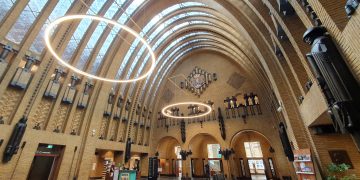











 RECIPES WITH A STORY
RECIPES WITH A STORY











 AUSTRIA-VIENNA
AUSTRIA-VIENNA
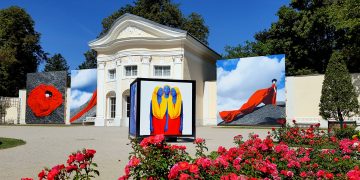




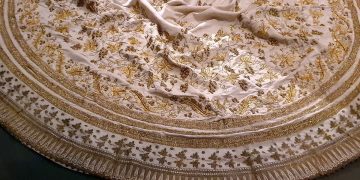
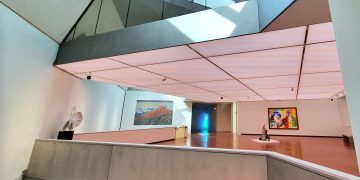




 SLOVAKIA-BRATISLAVA
SLOVAKIA-BRATISLAVA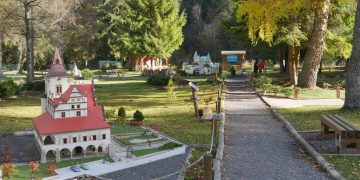



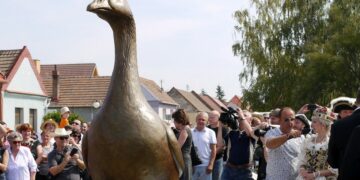



 EVENTS
EVENTS



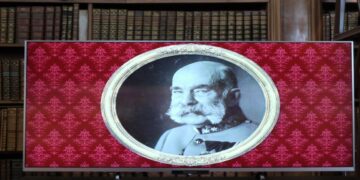
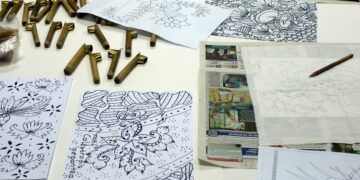


 INTERVIEWS
INTERVIEWS

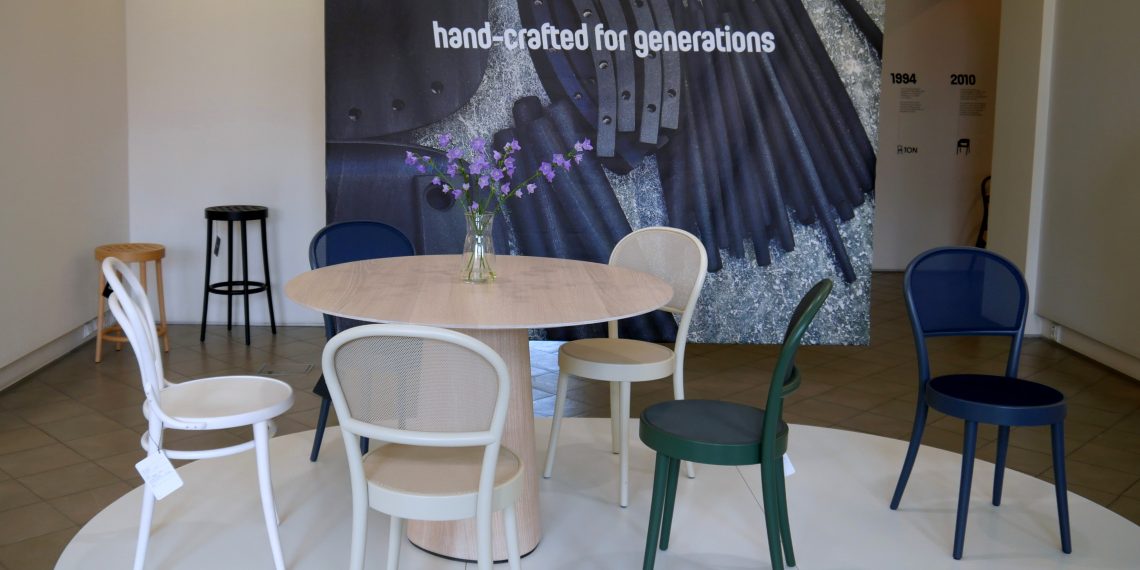





 Příbor – The Birthplace of the Famous Founder of Psychoanalysis
Příbor – The Birthplace of the Famous Founder of Psychoanalysis Hukvaldy – The Birthplace of the Famous Czech Composer Leoš Janáček
Hukvaldy – The Birthplace of the Famous Czech Composer Leoš Janáček



